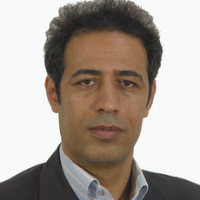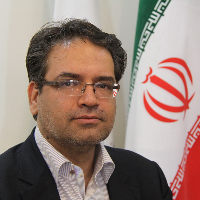Place Development and Environmental Quality Improvement of Urban Walk with a Grounded Theory Approach(Case Study: Hamedan Buali Urban Walk)
The public spaces of the city, as an important part of the city's social identity, constitute the area of social interaction and activities of citizens. When it comes to urban space, it is actually a space that provides economic, social and cultural interactions to its users. One of the most important criteria to be considered in evaluating cities and urban environments is the quality of public areas in that city, and the inevitable fact is that the quality of these spaces is a measure of the utility of cities . Urban public spaces allow people to meet and interact with one another. what drives people into one space is the presence of other people. Creating sociable public spaces as a place for social interaction to create sustainable urban environments is one of the goals that has received much attention in recent decades. The main function of public space is to provide and provide for the presence of the people, so its social and cultural dimensions are of particular importance. Nowadays due to many problems such as the car's dominance in space، Decreased safety, Reduced security, Lack of diverse and attractive population, Citizens' satisfaction with space and consequently their desire to be present in these spaces has been reduced to transform public spaces of the city, which should be the basis of social interactions of different age groups and behaviors, and to become passable spaces. Urban Walks are also one of the most important public areas in cities where more attention is paid to human needs and if they have the necessary qualities, they can be successful in attracting people and providing a suitable environment for increasing attendance and social interaction.In this study, we tried to explain the model of development and improvement of environmental quality of urban pedestrian spaces in Hamadan Bu Ali Street. Since the environmental quality of pedestrian spaces has a direct impact on the quality of life and environmental health of space users, therefore, attention is paid to the contextual and different characteristics of each space in the process of environmental quality enhancement, as well as the feedback and participation of users of the desired spaces and Improve the environmental quality of urban spaces.
The stages of a grounded theory research are based on data collection, note-taking, coding, categorization of concepts and categories. In the open coding process, the researcher forms data on the phenomenon under study through data fragmentation and, based on the data gathered from interviews, observes daily notes. And technical notes specify the main and sub-categories. Then at the axial coding stage, the researcher selects an open coding category and examines it as the main category or phenomenon at the center of the process. Then, the relationship between other categories that consist of causal conditions (factors that influence the main category), strategies (actions taken in relation to the main category), contextual and intermediate conditions (environmental and contextual factors). Specificity that influences strategy) and consequences (consequences of strategies) are identified and deduced by a central issue.In this way, we first saturated the in-depth interviews with 60 snowballing professionals, including professionals, city managers, businesspeople, users and tourists familiar with Bu Ali Street. Theoretical saturation with the snowball method is achieved when no new study sample is added to previous studies and nothing new is achieved. Participants in these in-depth interviews were divided into two categories of participants with internal origin (residents, business and urban managers) and participants with external origin (specialists, tourists, and customers). In-depth semi-structured interviews were conducted based on research questions. Subsequently, notes were taken and coded. The process of analyzing data as encoding is that in open coding the data are labeled and conceptualized and then categorized. In axial coding, the purpose is to identify a phenomenon with regard to the conditions that lead to it, and that is the context in which the category is located, generally the axial coding, the process of associating the subcategories. Into one category. Selective coding is the process of selecting one category for the central category and linking all other categories to that central category.Step One - Open Coding In this type of coding, concepts are formed after summarizing the interviews and examining the similarities and differences. During open coding, data is crushed, analyzed, compared, labeled and conceptualized. Conceptualization means that every part of the interactions, ideas and ideas contained in the text is extracted. Step Two - Axial Coding The purpose of this step is to establish relationships between concepts generated in the open coding process. The basis of the relational process of axial coding is to focus on and designate one category as the central category and then place other sub-homogeneous categories under the main category. Then, by examining the concepts and placement of close and homogeneous concepts in one class, the central category is extracted. 603 codes were extracted from the encoded data. These codes were coded at the open coding stage in 136 concepts and then 33 main categories. The categories extracted according to the Strauss and Corbin model were discussed in four sections: conditions (causal, contextual, confounder), main categories, strategies and outcomes.
The results show that environmental quality promotion can provide all aspects of tourism, social, cultural, economic, functional, physical and managerial development of Bu Ali urban walk development with strategic approach to the issue of location development. The core of the paradigm research model is a combination of programmable spatial identities and the ability to develop a urban walk that are influenced by spatial assets and spatial quality. Therefore, spatial identity and presence can organize as a driver for sustainable development and mitigation of existing anomalies, including diminished location, high commercialization and extreme and reduced environmental, functional and physical values. This model of location development has been extracted and deduced from the interaction of internal location factors and spatial and environmental capabilities. Considering the involvement of all stakeholders in the process of environmental quality development of the pavement, the use of indigenous and collective knowledge instead of engineering and expert knowledge, cultural and capacity building, interactive processes rather than top-down processes and the identification of internal assets in interaction with the local community, The concepts were extracted and coded in this study. Thus, the pavement spatial development model is based on identifying internal assets, leveraging them, and ultimately managing the place that is shaped and guided by a collaboration between local knowledge and expert knowledge.
Tourism, commercial and cultural identities are formed on the basis of location assets and are influenced by the culture and history of the place and the economic and commercial implications of the process of interaction between actors. That is, enhancing tourism, commercial and medical identity of the pavement, event making, enhancing social flow in space, pedestrian spatial networking based on cultural, recreational and tourism functions, upgrading tourism support services, formulation of promotion criteria and Street views, the traditional recreation and restoration approach, the refurbishment approach rather than the renovation approach, etc., are strategies and measures that can help sustainably develop and enhance the environmental quality of pedestrian spaces. The output of this process will create a dynamic, engaging, motivational, readable and motivating atmosphere of curiosity in the minds of the pedestrian location that provides the potential for competitors to attract audiences and tourists. This image creates an added value based on historical and cultural conditions as well as the development of environmental quality by increasing the visibility on the urban walk. In this way, we will see tourism growth, investment incentives, functional refinement around cultural and recreational functions, physical recreation, revitalization, empowerment and participation of indigenous actors, and ultimately promotion of place culture.
- حق عضویت دریافتی صرف حمایت از نشریات عضو و نگهداری، تکمیل و توسعه مگیران میشود.
- پرداخت حق اشتراک و دانلود مقالات اجازه بازنشر آن در سایر رسانههای چاپی و دیجیتال را به کاربر نمیدهد.




